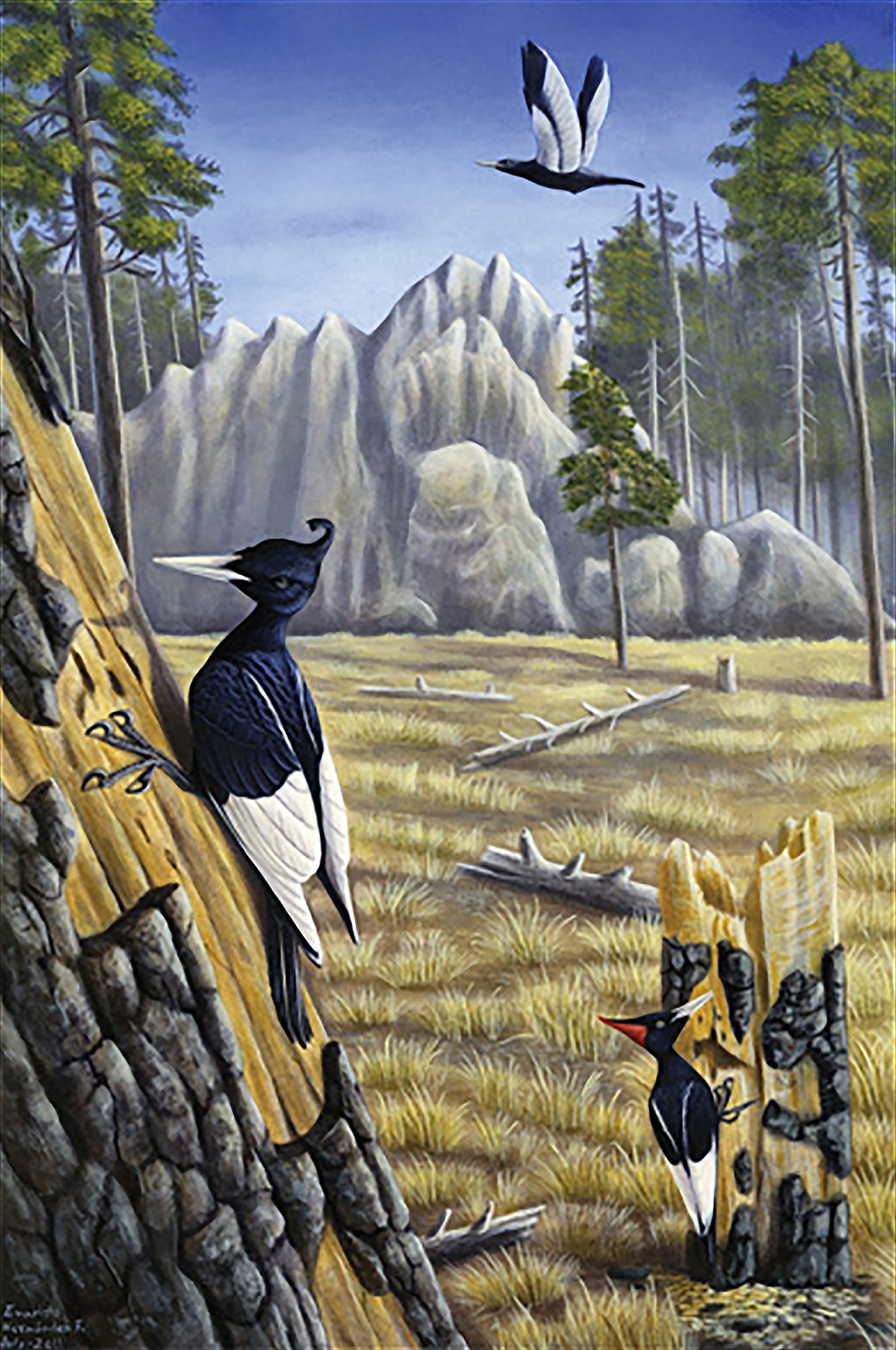Film Documentation of the Probably Extinct Imperial Woodpecker: The Auk paper
November 1, 2011
Lammertink, Martjan; Gallagher, Tim W.; Rosenberg, Kenneth V.; Fitzpatrick, John W.; Liner, Eric; Rojas-Tomé, Jorge; Escalante, Patricia. 2011. Film Documentation of the Probably Extinct Imperial Woodpecker (Campephilus imperialis). The Auk 128 (4): 671-677.
Abstract.—The Imperial Woodpecker (Campephilus imperialis) of Mexico—the largest woodpecker in the world—probably became extinct in the late 20th century, without known documentation of the species in life. We describe a recently discovered 16-mm color film of an Imperial Woodpecker taken in 1956 by William L. Rhein. The film documents climbing strides, launches, flights,and foraging of one female Imperial Woodpecker. For perches and foraging the woodpecker used dead or recently dead Durango pines (Pinus durangensis). Trunks of perch and foraging trees were of the largest diameters available in this tree species. After allowing for possible inaccuracies in the frame speed of the film, we found that the Imperial Woodpecker had slow climbing strides and a fast wingflap rate compared with other woodpeckers. Following landmarks documented during the 1956 expedition, we identified and surveyed the film site in 2010. The site was in coniferous forest in lightly undulating terrain at 2,700–2,900 m elevation. In 1956, the area was oldgrowth forest with abundant large and dead trees. By 2010, the area had been logged multiple times. Interviews with local people indicated that Imperial Woodpeckers had disappeared from the region by 1960 and that they were killed by hunting and perhaps through poisoning instigated by logging interests. Human persecution and the logging of large pines for timber and of dead trees for pulp were likely principal factors in the extinction process of the Imperial Woodpecker. Received 27 November 2010, accepted 13 May 2011.
Supporting Material: Video
These four clips were filmed by William L. Rhein in 1956, donated by Ronald Thorpe, and archived in the Cornell Lab of Ornithology’s Macaulay Library. You can view the clips here, or download them for frame by frame viewing from the links below.
- Film 1: A female Imperial Woodpecker (Campephilus imperialis) by William L. Rhein, in the full 85 s sequence, played at 24 fps.
- Film 2: Frames 1046 to 1508 from Film 1, after stabilization of camera shake, showing a 15-second climbing scene.
- Film 3: Frames 1542 to 1757 from Film 1, after stabilization of camera shake, showing a 9-second foraging scene.
- A sample of 4 minutes and 46 seconds of film by William L. Rhein from 1956, played at 24 fps, showing mule trains, expedition members, camp sites, and habitats during the expedition that filmed the Imperial Woodpecker. The young man in a red shirt at 1:17 and in a white shirt at 3:12 and 3:28 is Richard Heintzelman. The heavyset man with a brown hat at 1:27, 3:12 and 3:28 is Richard Rauch. Pine trees with large DBH are in view at 3:44. The distant high mountain seen at 4:03 and 4:38 is Cerro Gordo (3340 m), the highest mountain in the Sierra Madre Occidental, 23 km to the southwest of the film site.
More on the Imperial Woodpecker 2010 Expedition
- William Rhein on filming the Imperial Woodpecker (video)
- Creating The Auk cover. Learn how the Cornell Lab’s Bartels Science Illustration intern Evaristo Hernández-Fernández created the cover for the October 2011 issue of The Auk magazine. (video)
- Return To Durango: Searching For Mexico’s Imperial Woodpecker, Living Bird magazine, Autumn 2011.

All About Birds
is a free resource
Available for everyone,
funded by donors like you
American Kestrel by Blair Dudeck / Macaulay Library